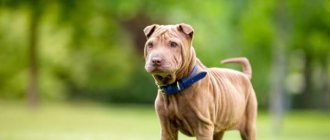The German Shepherd is one of the strongest breeds, it is famous for its good health and longevity. But even for such a hardy pet, the time allotted is much less than for a person: German shepherds live 12-15 years.
You can extend the life of your four-legged pet, the main thing is to follow the rules of keeping and monitor the dog’s well-being.
Life expectancy of a German Shepherd
The lifespan of a German Shepherd is influenced by several factors:
- conditions of detention;
- quality of care;
- heredity;
- floor;
- health status.
The German is a large breed; its weight affects the functioning of the musculoskeletal system, heart and blood vessels. The heavier the animal, the more stress the organs experience. Being underweight also becomes a risk factor for premature death. The more harmoniously built a dog is, the higher the chance of a long life. It is shortened by hereditary diseases, poor living conditions and poor-quality food. Pets live longer if puppies are vaccinated in a timely manner and then revaccinated annually. According to statistics, the average life expectancy of a German Shepherd is 10-15 years.
Depending on gender
According to statistics, the life expectancy of males and females differs little. The minimum term is five to seven years, most Germans live to be fourteen. They become long-livers regardless of gender, the main thing is that the pets are active and have a balanced diet, rich in vitamins and mineral supplements. However, there are some factors that can affect the life expectancy of males and females and shorten it by several years.
Males
The lifespan of a male German Shepherd can be shortened by indiscriminate matings. The dog’s body wears out ahead of time, pathologies of the urinary system and inflammation of the prostate gland develop. If the dog is not given maximum attention, the disease becomes chronic and not only suppresses sexual function, but also shortens the years. It is shortened by the violent and irrepressible nature of male dogs and fights with other animals. The German gets injured, which negatively affects his health.
Girls
It is believed that females live one and a half to two years longer than males. This is due to their calm nature and behavior. The life expectancy of shepherd girls is influenced by the number of pregnancies and births, complications that have occurred, and oncological diseases of the reproductive organs.
If a dog is purchased not for exhibitions and competitions, but for work, veterinarians recommend sterilizing the bitch, which can help prolong its life and maintain health.
Factors influencing life expectancy
Based on many years of observations, it was concluded that black German shepherds live longer than others. This is explained by the rarity of the standard color, the greater endurance of such individuals, and, consequently, their longevity. Dogs with a non-standard color are less viable due to mutations that occurred at the gene level, due to which unusual colors appeared.
Height and weight matter. It has been proven that the larger the animal, the shorter the life. A dog weighing 55 kg and 70 cm tall at the withers lives on average two years less than a dog weighing 45 kg and 60 cm tall.
Origin story
Herding dogs similar to the German Shepherd have long lived in the territory of modern Germany.
These were strong and brave animals, protecting not only livestock, but also farmsteads from the invasion of robbers and not afraid to engage in single combat with wolves.
By the beginning of targeted breeding work in Germany there were many excellent working shepherd dogs, which became the founders of the new breed.
This happened at the end of the 19th century and very quickly the physical characteristics and working qualities of the German Shepherd made them popular. Around this time, their use in the army and police service began.
The creator of the German Shepherd and the first of its breeders is considered to be German cavalry colonel Max von Stefanitz. He bred these dogs from 1884 to 1896 and did a lot for the recognition and establishment of a new breed.
Average life expectancy of a German Shepherd
The average life age of a German Shepherd is 12-15 years. A puppy is purchased when it is two to three months old, at which time it is completely dependent on a person. By the age of one and a half, he matures, and is fully formed by two. From three to six years old, the dog is in its prime. At seven, the first signs of aging appear - vision deteriorates, dental problems arise, old injuries worsen. From the age of ten, a German needs increased attention as he becomes older. German Shepherds live an average of 13 years, after this age they are considered long-lived, provide care, care, and are treated with respect.
Age of a German Shepherd by human standards
To understand the age characteristics of his pet, it is better for the owner to convert his years to human standards.
| German Shepherd Age (years) | Person's age (years) |
| 0,5 | 6 |
| 1 | 15 |
| 2 | 24 |
| 3 | 29 |
| 4 | 34 |
| 5 | 37 |
| 6 | 42 |
| 7 | 47 |
| 8 | 51 |
| 9 | 56 |
| 10 | 60 |
| 11 | 65 |
| 12 | 69 |
| 13 | 74 |
| 14 | 78 |
| 15 | 83 |
| 16 | 87 |
How many years do German Shepherds live in an apartment?
A service dog requires high physical activity, training and training. Limitation of its activity and years of life spent at home in a small apartment lead to negative consequences for the mental and physical health of the pet, shortening its life by 2-3 years. He becomes aggressive, the muscles lose their former strength and weaken. The dog cannot stand up for itself and protect its owner. But this does not mean that these consequences will necessarily manifest themselves in a German shepherd living in an apartment. If you provide her with a sufficient number of walks, spend time playing, studying, constantly moving, communicating with other dogs, her life expectancy remains within the average for this breed.
Health
Of course, German Shepherds also get sick, sometimes very seriously. But if we compare it with other pets, including dogs of other breeds, we can say that these pets bother their owners much less often. It's all about good health and good immunity.
True, all this needs to be supported. Poor nutrition and living conditions that do not meet recommendations lead to the dog developing a certain disease. This breed is characterized by skin ailments, and all because it naturally has a poorly protected epidermis. Therefore, various dermatitis, rashes, seborrhea, scabies, etc. arise among the Germans with enviable consistency.
Poor nutrition and living conditions that do not meet recommendations lead to the dog developing a certain disease.
Representatives of this breed are also susceptible to various orthopedic diseases, primarily the following:
- osteochondrosis;
- joint dysplasia;
- hypertrophic osteodystrophy;
- spondylomyelopathy;
- ligament ruptures (mainly cruciate).
But this problem is relevant for all active and energetic dogs, so it is still not worth separating German shepherds into a separate group.
How long do German Shepherds live outside?
Shepherd dogs that live outdoors all year round have better health than domestic dogs. They have a thicker undercoat, higher immunity, and are less likely to get colds. The most convenient option for keeping a German is a spacious enclosure with a canopy that protects from the sun and rain. Regardless of its area, walks with the dog should be daily - the owner communicates closely with the pet, teaches commands, obedience and submission. As practice shows, a service dog living on the street more often becomes a long-liver, in contrast to one huddled in an apartment.
A special case is keeping it on a chain. The dog is constantly stressed and depressed and cannot move freely. Such restrictions have a negative impact on his health.
Causes of premature death of a dog
In the life of service dogs, the risk of premature death is quite high. Germans engaged in difficult search or security work are injured or killed during the task.
The owner is most often to blame for the early death of dogs - he feeds them incorrectly, does not ensure compliance with the vaccination regimen, or does not exercise enough. If there is no attention to the behavior of the pet on the street and flaws in upbringing, it eats from the ground, as a result, eating disorders and poisoning are possible. Germans who disobey their master run away and fall under the wheels of cars.
The lifespan of a dog is shortened by diseases to which the breed is prone - oncology, liver and kidney failure.
Conditions for life extension
To ensure that your pet pleases its owners for as long as possible, you need to take the following measures:
- Provide quality maintenance and daily long walks.
- Prepare nutritious and balanced food.
- Carry out vaccinations strictly according to schedule.
- Monitor the dog’s condition and health and visit a veterinarian regularly.
Diet
The diet of an adult German Shepherd dog should include:
- Proteins (up to 70%) – offal, lean meat, eggs, cottage cheese, milk.
- Carbohydrates (up to 30%) – cereals, fiber, fruits and vegetables.
- Fats (up to 20%) – vegetable and animal.
The diet is adjusted depending on age - for a puppy, the fat content of food is reduced to avoid excess weight; for an adult working dog, the amount of protein food is increased.
Maintenance and care of the German
To keep your pet healthy and ensure its long existence, it is necessary to create a comfortable environment - the outdoor enclosure or bed in the apartment must be clean, the food must be fresh, and water must be available at all times. From time to time, a German needs to be bathed, combed, nails trimmed, and eyes and ears cleaned. In severe frosts, they are transferred from the enclosure to a warm room, this is especially important for puppies, nursing bitches and old dogs.
Walking and playing outside
Without activity, long walks, games and training, the dog grows weak and phlegmatic. The better the physical shape, the longer he remains mobile, healthy and efficient.
At a special area, the German is let off the leash - he should not only feel freedom, but also communicate with other dogs. An hour and a half is the minimum time for a one-time walk.
Quality treatment and deworming
Even a common cold needs to be treated promptly. In this case, it will not cause complications and does not become chronic. You should carefully monitor the animal’s condition and, at the first symptoms, provide assistance or contact a veterinary clinic. Sick puppies are shown to the doctor at least once every four months, tested and examined.
Once every six months, prevention of helminthic infestation is carried out - tablets or suspension are fed according to the age and weight of the dog. Otherwise, the parasites multiply and cause problems with the liver, lungs and heart.
Signs of old age in a German Shepherd
At the age of seven years, the German Shepherd shows the first signs of aging, gradually they become more and more, and the dog becomes elderly. The main senile changes include:
- gaining excess weight;
- slight blurred eyes;
- difficulty urinating or incontinence;
- fatty lipomas in the form of lumps under the skin;
- slow pace of movements;
- drowsiness;
- restless behavior;
- lack of response to commands.
How to extend the life of a pet
To increase the life expectancy of a German, it is recommended that the dog be provided with balanced feeding, systematic veterinary examinations, and daily physical and intellectual exercise. It is also important to monitor the absence of stress and excess weight.
Monitor your dog's weight
It has been scientifically proven that the smaller the dog, the longer it lives. Obesity even harms young animals. For older German Shepherds, being overweight is deadly.
Every extra kilogram creates additional stress on the joints, provoking the development of arthritis, arthrosis and other diseases of the musculoskeletal system. To increase the lifespan of a German Shepherd, it is recommended to keep the dog in working condition, in which the animal’s ribs can be clearly felt.
Important! The weight of a German Shepherd should be proportional to its height. The weight of an adult dog with a height of 55-65 cm at the withers varies between 22-40 kg.
Availability of daily exercise
To prolong the life of a German Shepherd, it is recommended to provide the dog with adequate exercise. Young animals must move a lot at a fast pace, overcome obstacles, play with their relatives and do exercises. In summer, it is useful to exercise German Shepherds by swimming in the river.
Most older dogs over 10-11 years old refuse long walks, preferring to lie down. But German Shepherds need physical exercise. Therefore, it is recommended to force dogs to go out at least for short walks. If it is difficult for an animal to walk for a long time, it is advisable to stop to rest.
Eliminate stress
To increase the life expectancy of a German Shepherd, it is recommended to create a comfortable psychological environment for the dog. It is advisable to remove irritating factors and everything that causes stress from the animal’s field of vision.
Staying in isolation, physical punishment and screaming destabilize the dog's emotional state. In order not to expose the German Shepherd to unnecessary stress and to prolong its life, the pet should not be beaten or left alone for a long time.
Regular checks with a veterinarian
In order for a German Shepherd to live a long life, remaining active and healthy into old age, it is necessary to carefully monitor the dog’s well-being. Having noticed the first signs of illness, it is recommended to immediately show your pet to a veterinarian. In order not to miss the onset of the development of the disease and to begin treatment in a timely manner, it is recommended to take your German Shepherd for tests and preventive examinations every six months.
It is advisable to subject the dog to antiparasitic treatments approximately once every 6 months. To prevent helminthic infestations, it is recommended that Germans be given a special suspension or tablets, the dosage of which is calculated based on the weight of the animal.
Important! Neglect of anthelmintic treatments leads to rapid proliferation of parasites, causing problems with the heart, lungs and liver. Therefore, be sure to do the treatment once every six months.
We recommend reading:
- Types of German Shepherd colors and breed standard
- Rating of dog breeds by intelligence, look at where the German Shepherd ranks and you will understand why this breed is so popular.
Regular treatments against ectoparasites will help preserve the life and health of a German. Ixodid ticks are carriers of many serious diseases, and their bite can lead to the premature death of a dog.
Continue to give your animal mental stimulation
Germans are smart and efficient animals that require regular intellectual stress. In order for dogs to realize their innate potential, it is recommended to constantly train them and develop their protective qualities.
Caring for an old dog
At 10 years old, German Shepherds are considered senior. They absorb protein less well, excess phosphorus leads to kidney problems, so the dog’s diet is adjusted. The level of physical activity is reduced, the dog no longer has the former activity. Twice a year he is shown to the veterinarian to notice any abnormalities in his condition. They continue to vaccinate, carry out hygiene measures, and try not to change the usual routine for Germans.
Lifestyle
The German breed belongs to the universal service group. Dogs can be guards, escorts, search engines or fighters after undergoing special training. The character traits of shepherd dogs (fearlessness, obedience, concentration) allow the dogs to easily get along with people and do what is required of them without showing signs of stubbornness or aggression. These large dogs cannot stand a reclusive life; it is vital for them to perform physical activity, which can be presented in the form of sports competitions, games: Frisbee, agility, weight-pulling and others.
With German Shepherds you can go into the forest, hike, walk in the mountains, just run through the park or do cyclocross. It is important to remember that walking an animal should not turn into torture for it, walks in hot weather should be moderate, and you should not go outside for a long time during cold rain or frost. Breed diseases and defects significantly reduce the dog’s working qualities and reduce life expectancy.
Diseases, defects:
- cryptorchidism;
- spondylomyelopathy;
- violations of the structure of the body and limbs;
- malocclusion, drooping ears;
- low pigmentation of the skin and others.
Dogs also have vulnerable skin; they often develop seborrhea, pyoderma, and scabies. There are individuals with disorders in the immune system.











